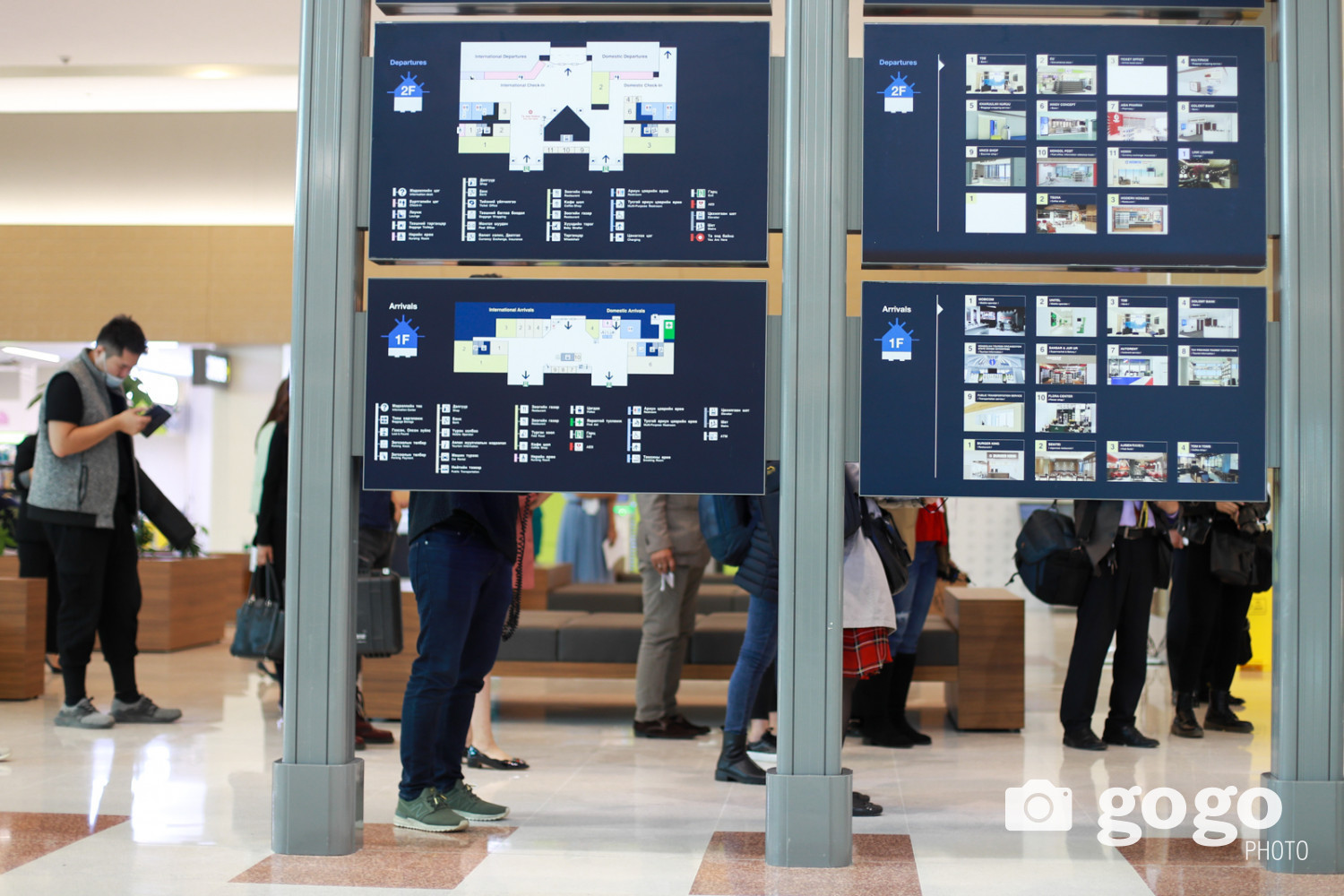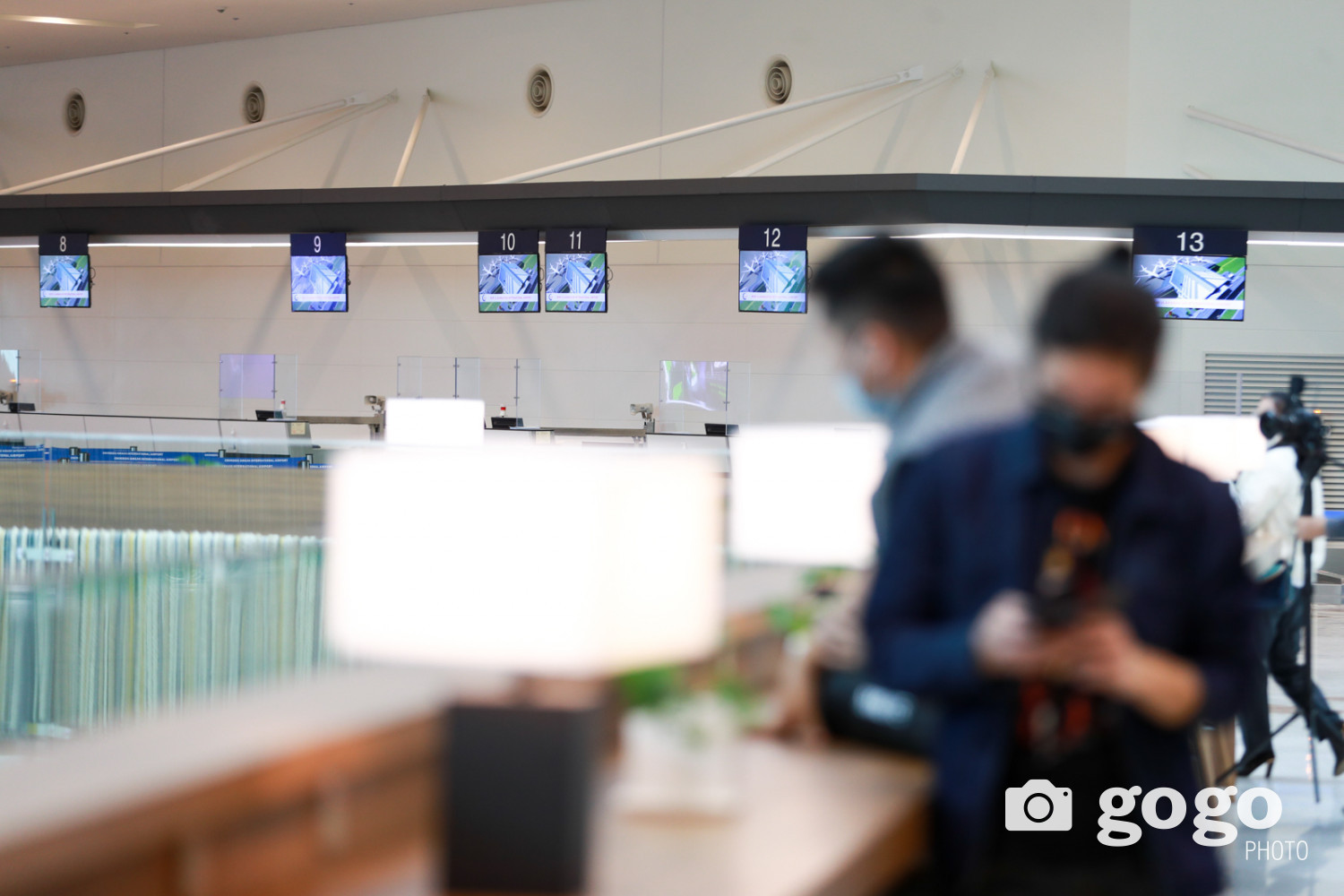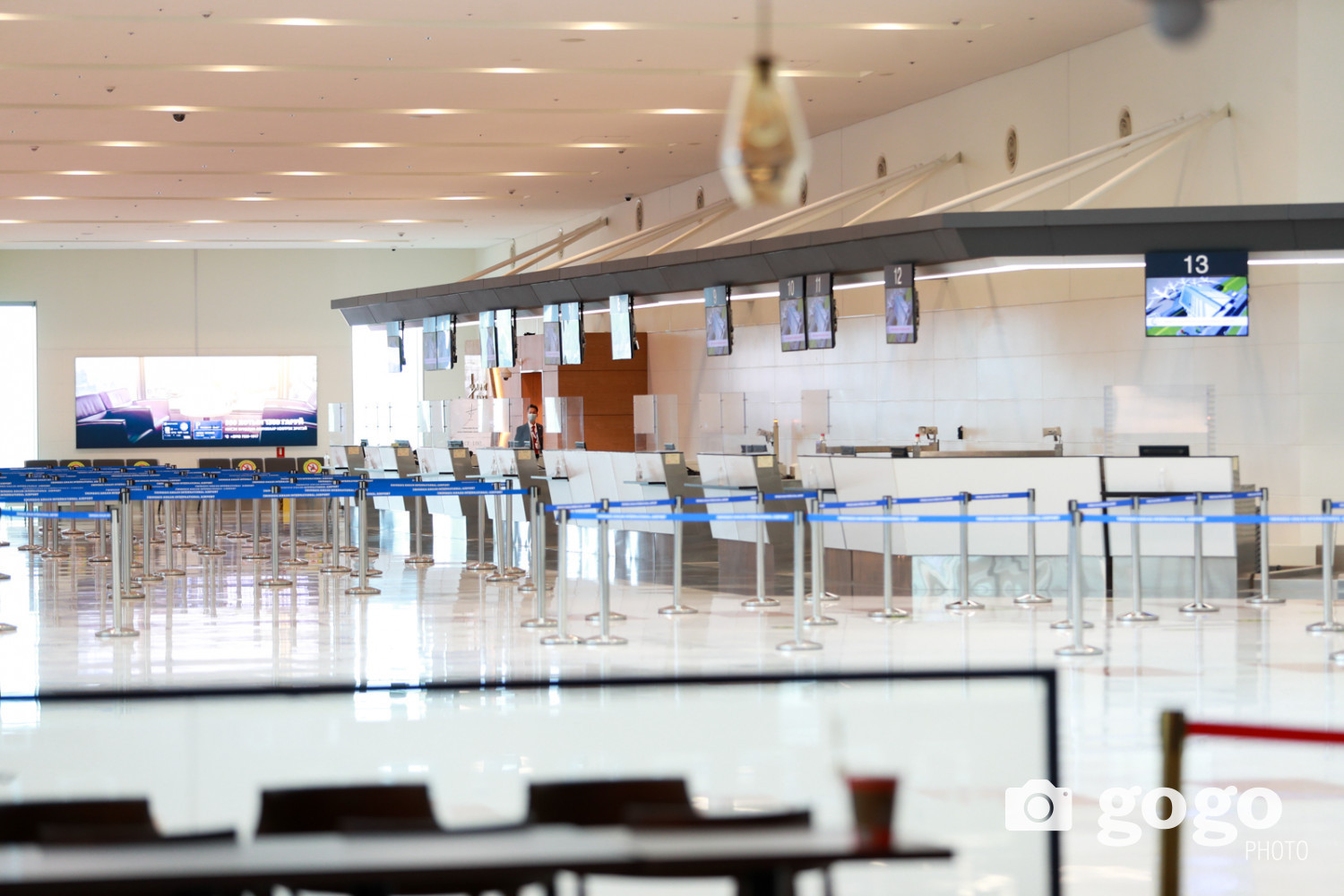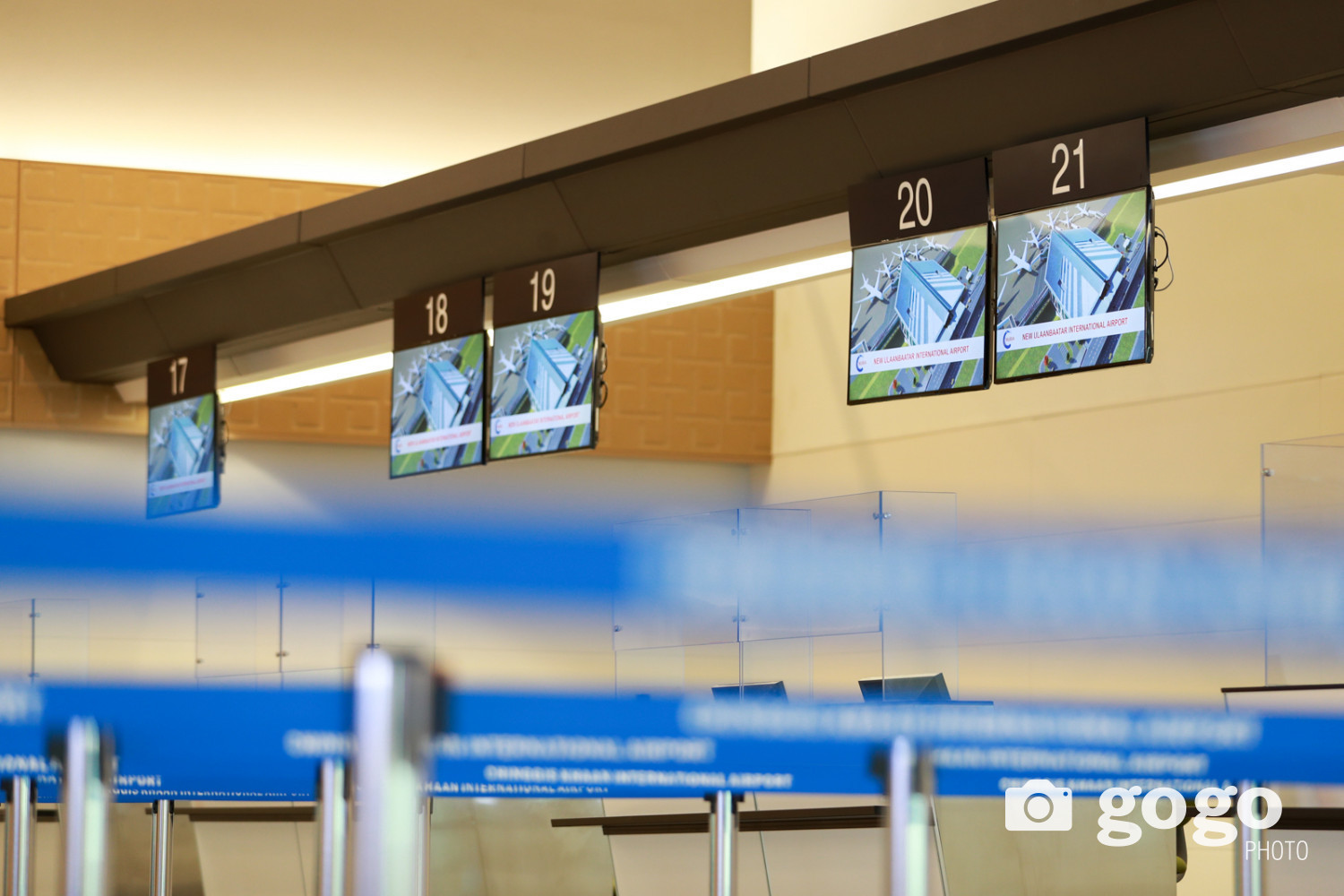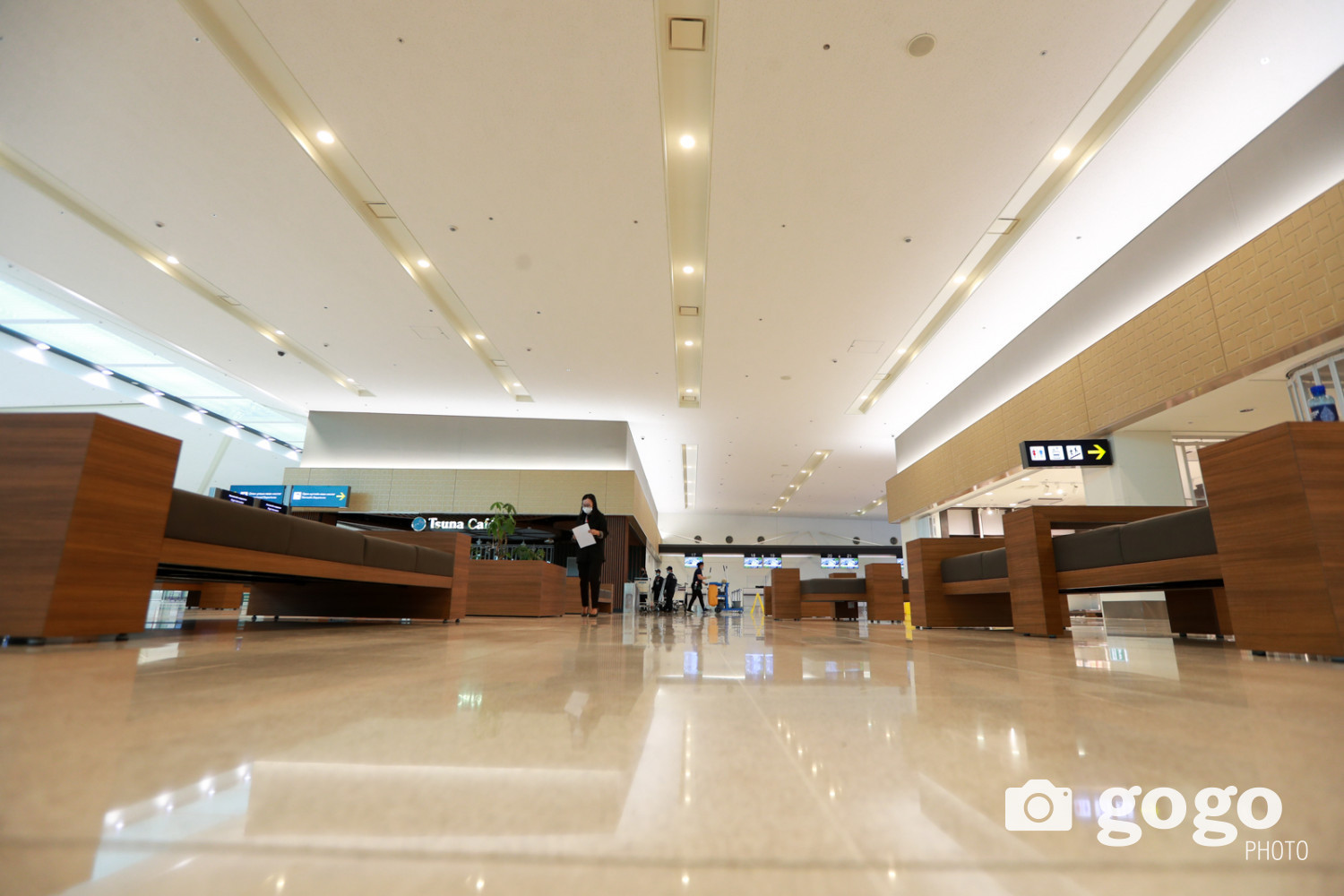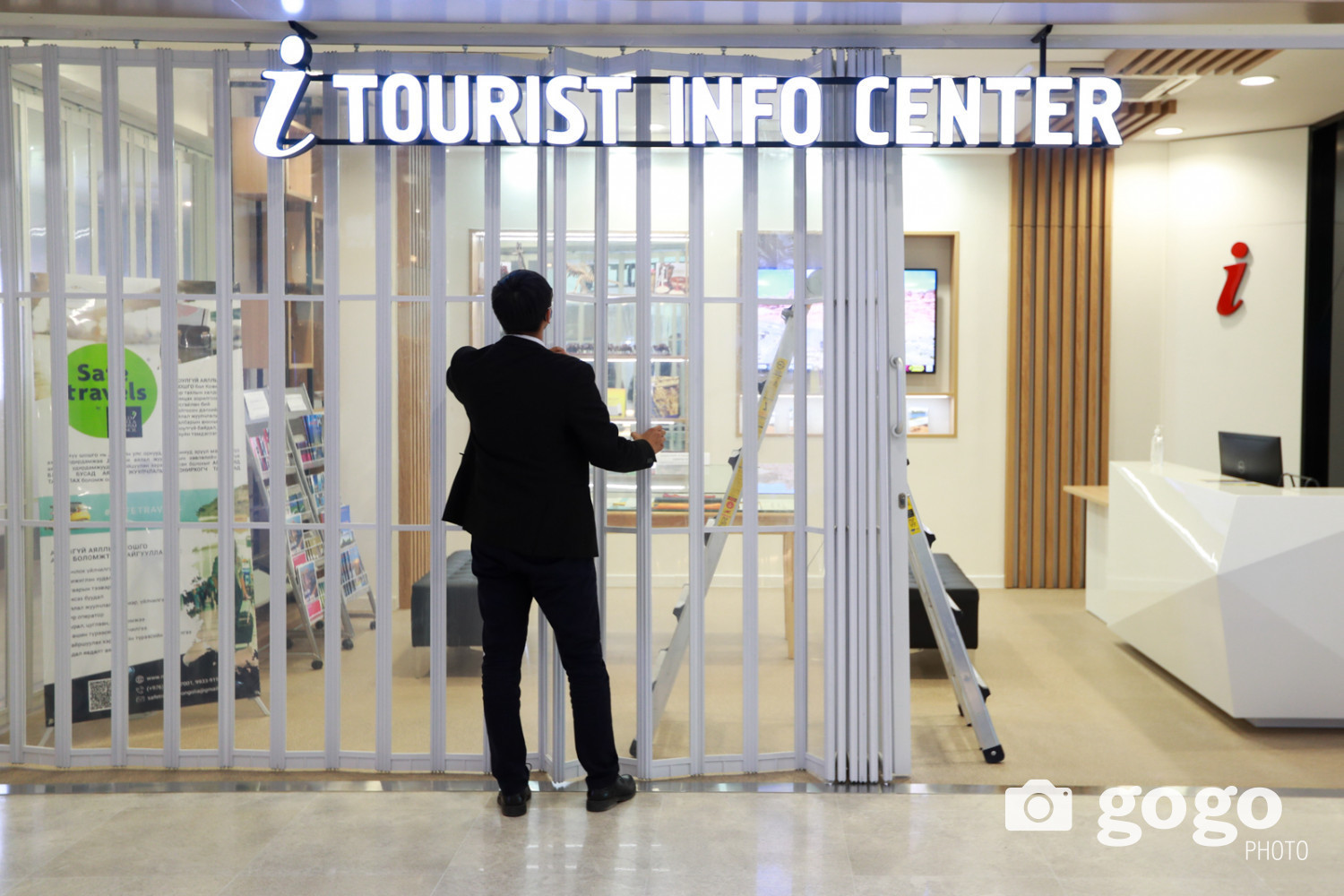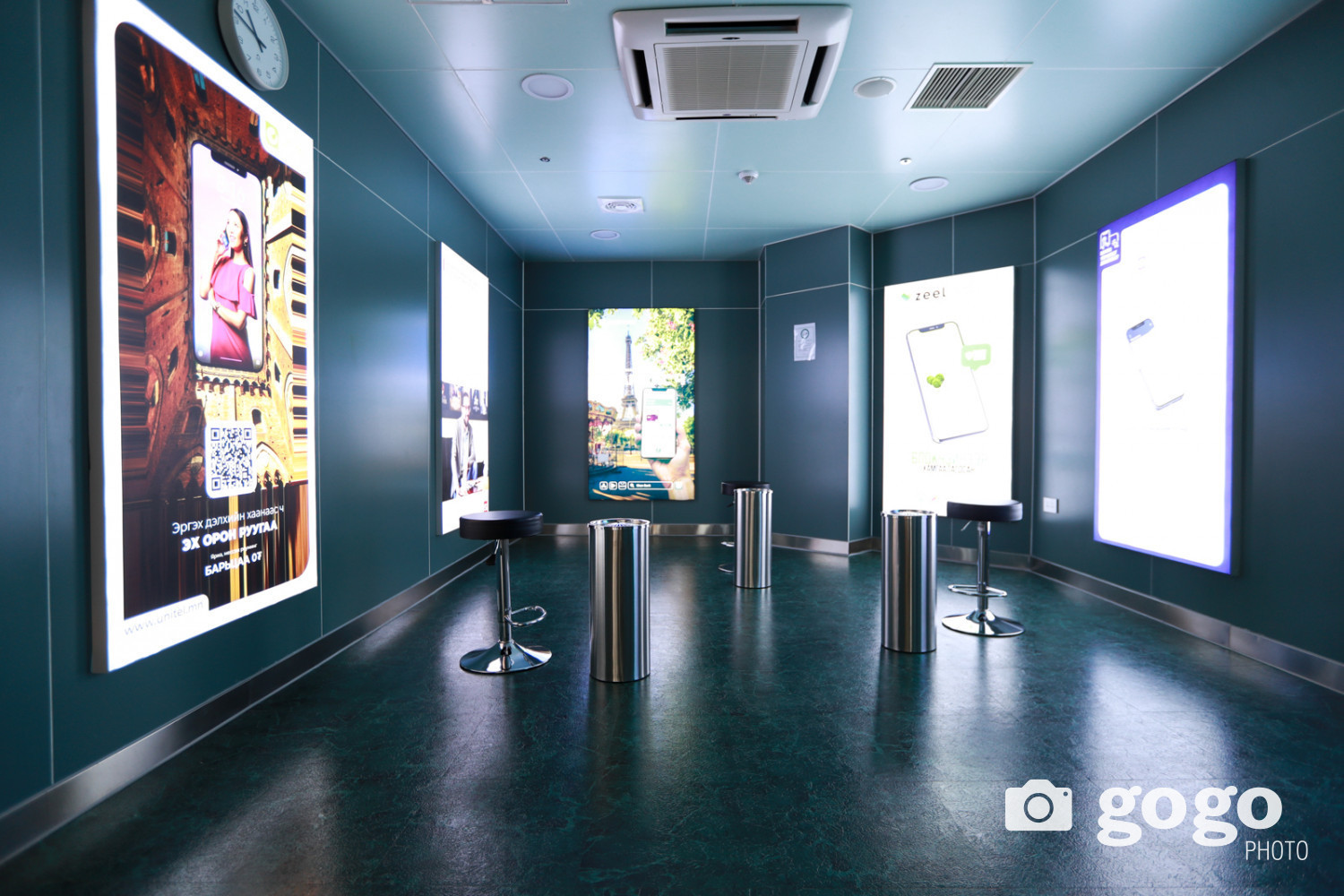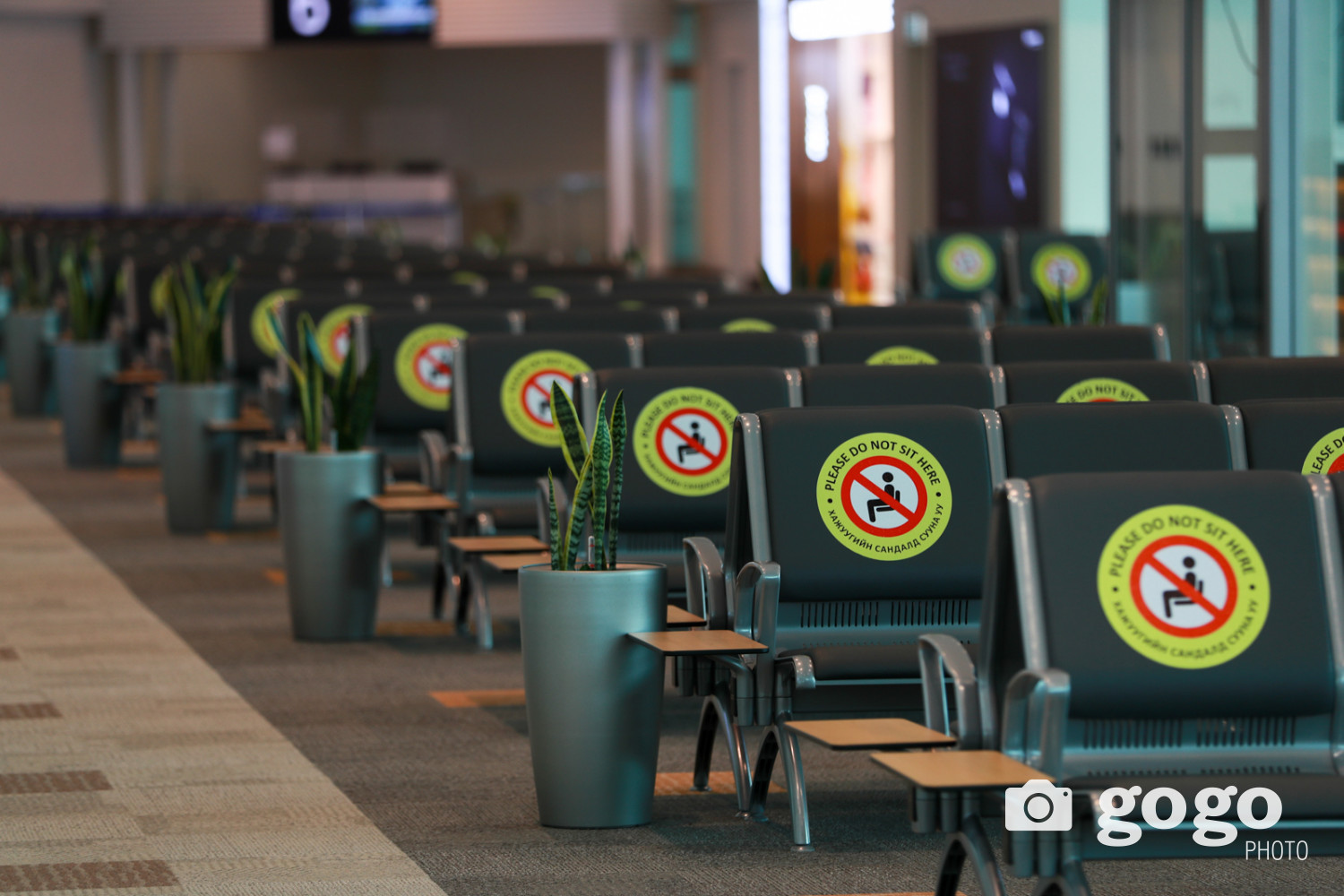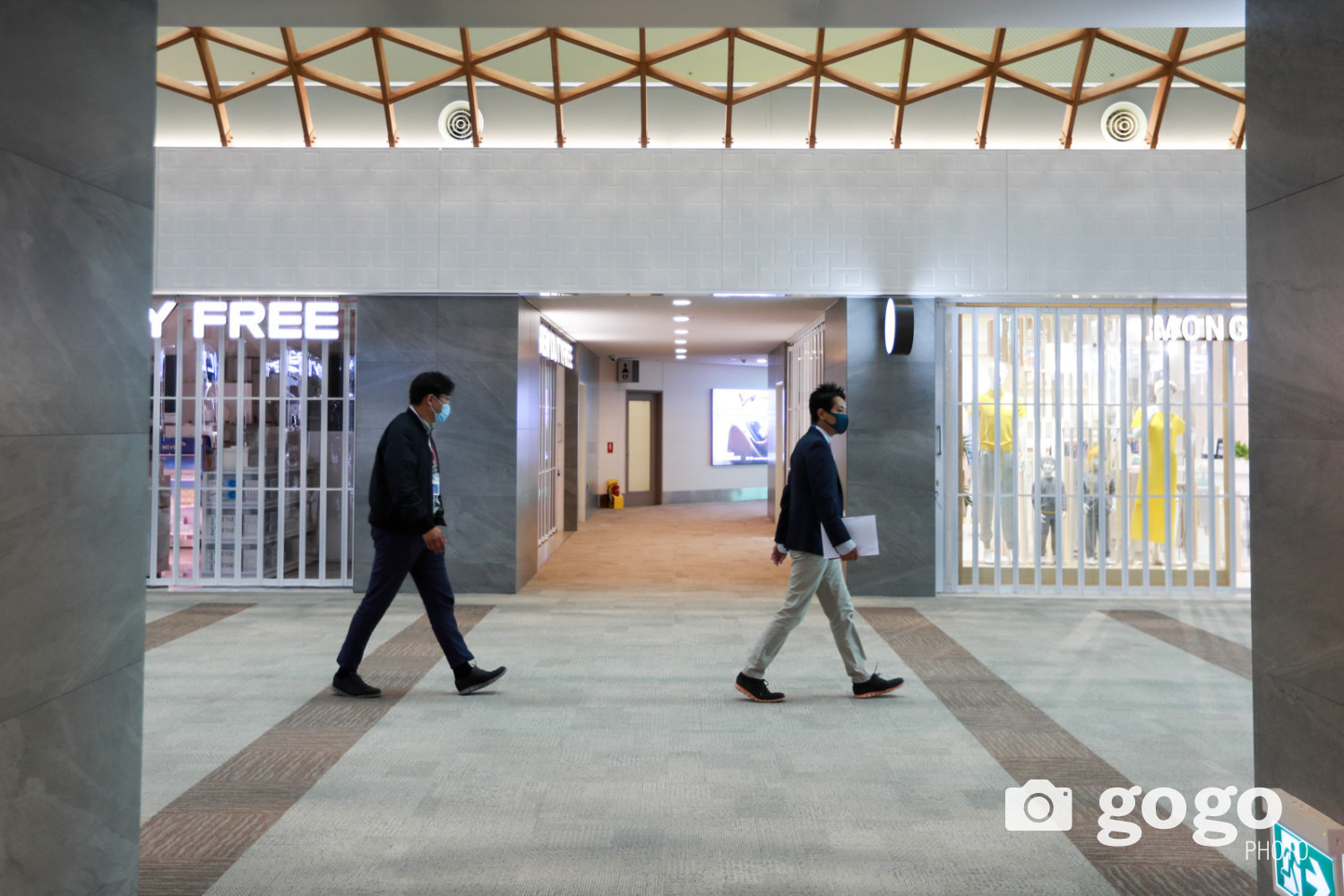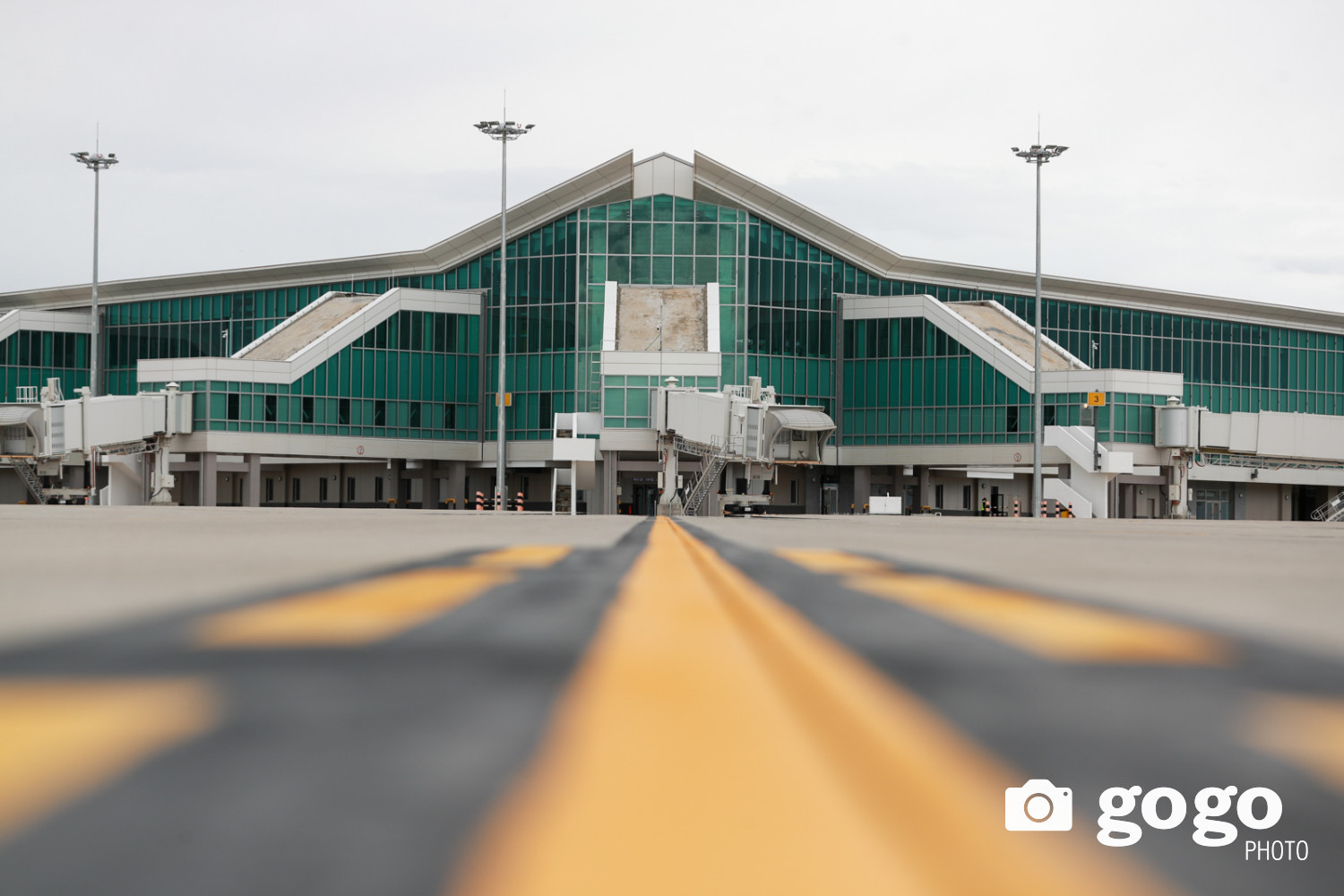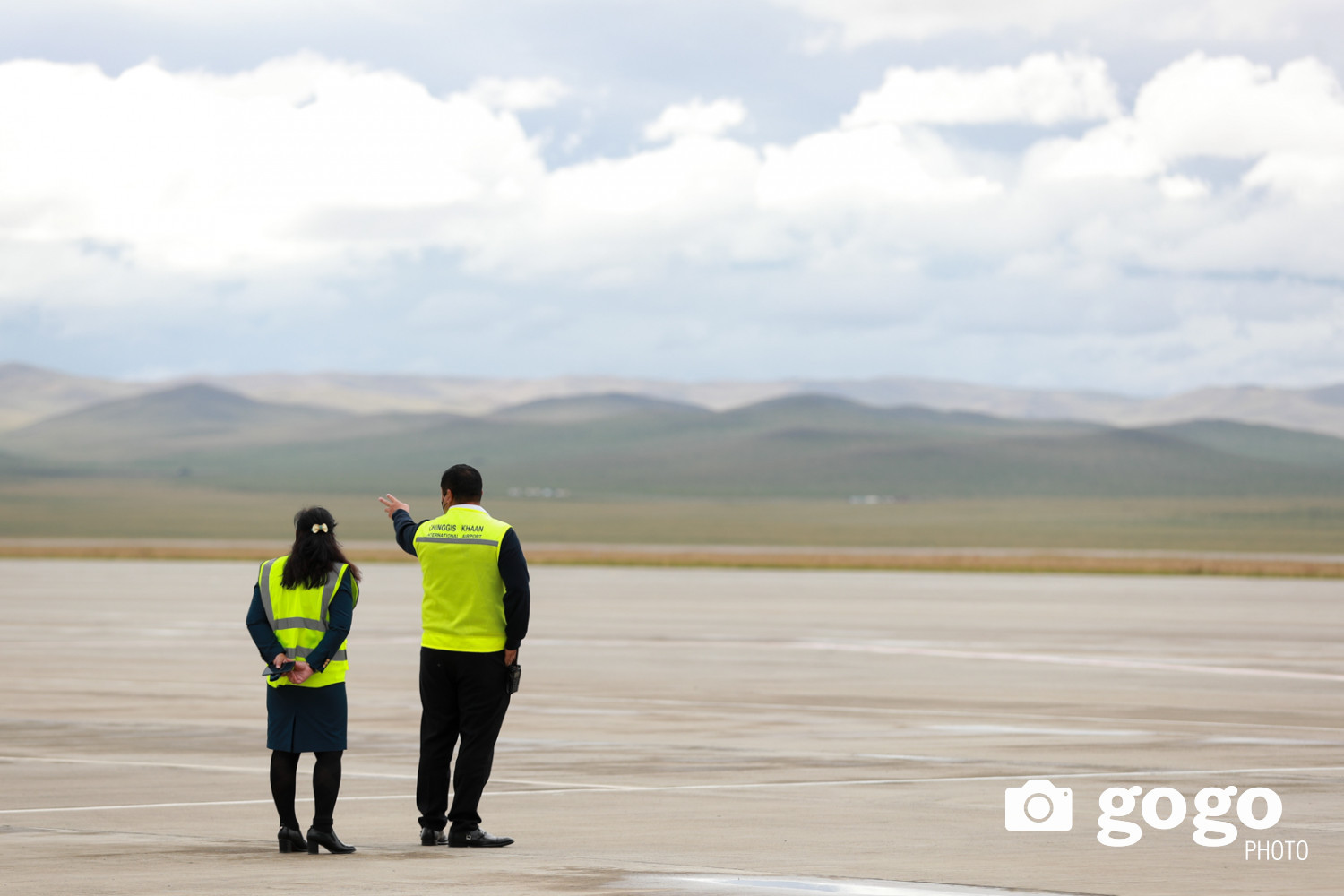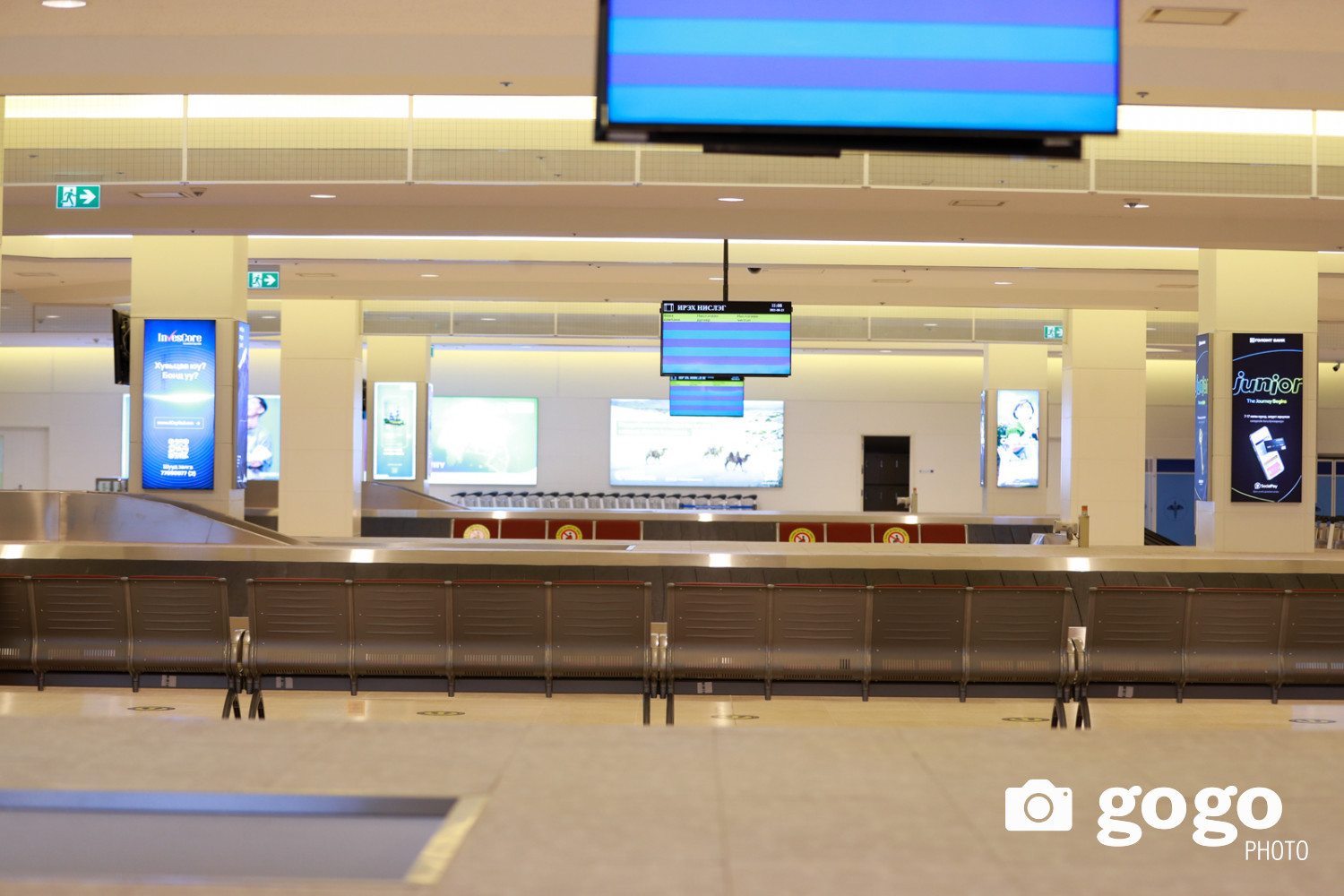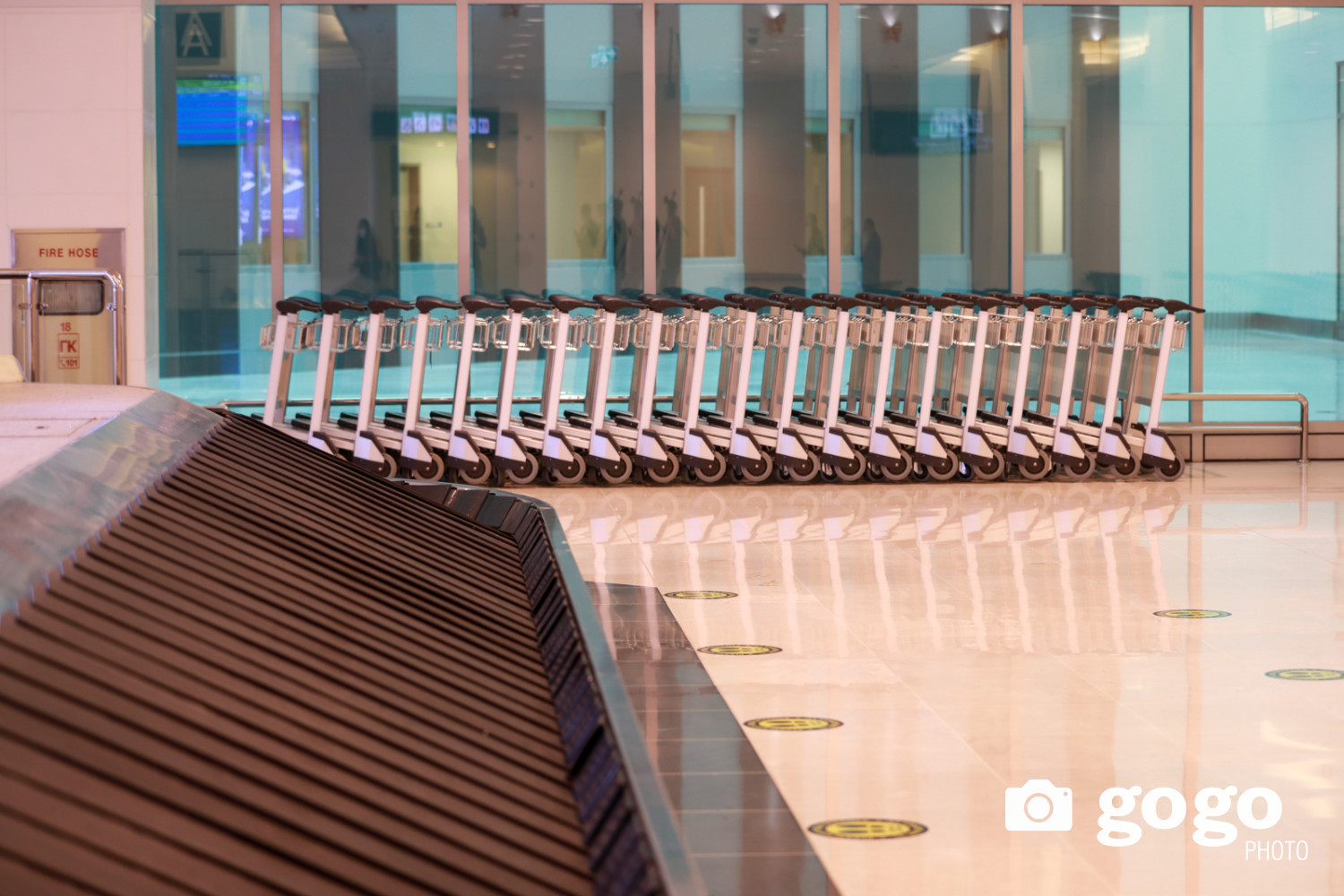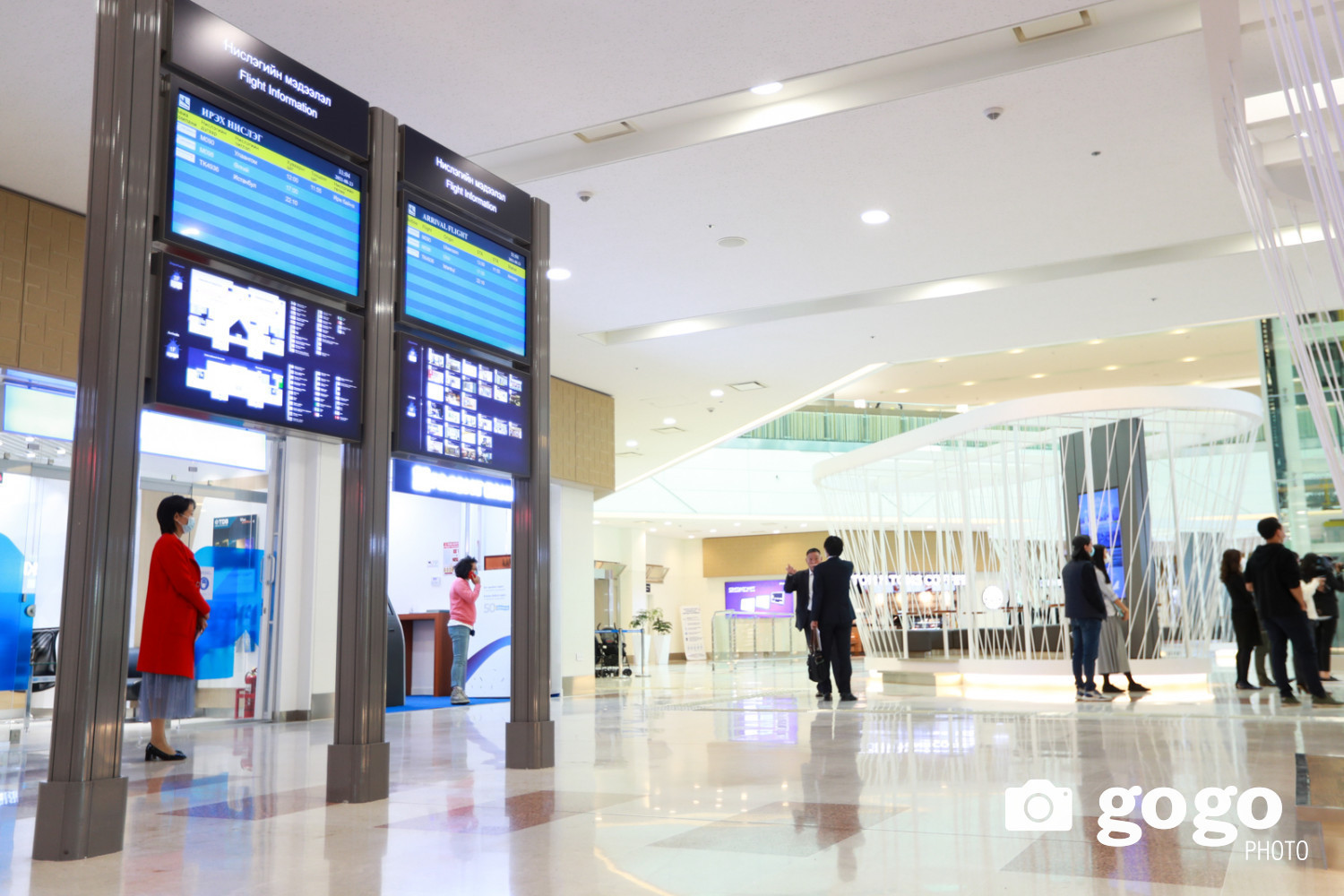Chinggis Khaan International Airport made its first flight a month ago. Currently, 3-4 regular flights are operated a day. It will be possible to operate 7-8 flights a day after the pandemic.
All airport facilities have been fully commissioned and are operating normally. The passenger service building at the Chinggis Khaan International Airport is twice as large as the one at Buyant-Ukhaa International Airport. The building has a modern Mongolian and Japanese interior and international airport standards.
The passenger service building has already been renovated, and pharmacies, book and flower shops, souvenirs, jewelry, cashmere and felt artisans and banks, operators, currency exchange offices, and insurance companies have opened their branches. The new airport will also work with the Japanese side, and Tsuna coffee shop, Ajisen Ramen, and Shinoa restaurants are about to open in Mongolia for the first time.
Airports of developed countries introduced automatic machines for passengers to check in and register their passports. As for the Chinggis Khaan International Airport, the passenger can check-in without meeting with the registration officer. The new airport has 10 check-ins for domestic flights and 16 check-ins for foreign flights. Once the passengers have registered and handed over their luggage, it will be checked automatically and each luggage will not be assigned to an employee due to the BHS system introduced. The system automatically recognizes which plane the luggage will be placed on, saving time and reducing human activity.
There is a statue of the Mongolian map, made of stone, located in the center of the hall. U.Khurelsukh, the President of Mongolia, once said “Chinggis Khaan International Airport will be the bridge to connect landlocked Mongolia with the world”. And his quote was written on the statue in Mongolian and English.
Chinggis Khaan International Airport made its first flight a month ago. Currently, 3-4 regular flights are operated a day. It will be possible to operate 7-8 flights a day after the pandemic.
All airport facilities have been fully commissioned and are operating normally. The passenger service building at the Chinggis Khaan International Airport is twice as large as the one at Buyant-Ukhaa International Airport. The building has a modern Mongolian and Japanese interior and international airport standards.
The passenger service building has already been renovated, and pharmacies, book and flower shops, souvenirs, jewelry, cashmere and felt artisans and banks, operators, currency exchange offices, and insurance companies have opened their branches. The new airport will also work with the Japanese side, and Tsuna coffee shop, Ajisen Ramen, and Shinoa restaurants are about to open in Mongolia for the first time.
Airports of developed countries introduced automatic machines for passengers to check in and register their passports. As for the Chinggis Khaan International Airport, the passenger can check-in without meeting with the registration officer. The new airport has 10 check-ins for domestic flights and 16 check-ins for foreign flights. Once the passengers have registered and handed over their luggage, it will be checked automatically and each luggage will not be assigned to an employee due to the BHS system introduced. The system automatically recognizes which plane the luggage will be placed on, saving time and reducing human activity.
There is a statue of the Mongolian map, made of stone, located in the center of the hall. U.Khurelsukh, the President of Mongolia, once said “Chinggis Khaan International Airport will be the bridge to connect landlocked Mongolia with the world”. And his quote was written on the statue in Mongolian and English.
On the first floor of the new airport, a Tourism Center of the Ministry of Environment and Tourism and Tourist Introduction center to introduce sightseeing places will be established. There are also bank branches, mobile operators, supermarkets, car rental, taxi and bus stations, and an information center on this floor. You can get information about the new airport by calling 1900-1980.
The plane can be landed on the west or east side of the airport, depending on the day's wind direction. Buyant-Ukhaa International Airport, which has been operating domestic and international flights until now, was opened in 1957. Since then, extensions such as runway coverage have been made to meet the growing demand. However, the airport has hills to the south and east, so it is only possible to make a flight from the northwest. Due to its limited
geographical location and climatic conditions, the flight was canceled and delayed sometimes. Therefore, a new airport was built to improve flight safety and security.
The airport, which has a capacity of three million passengers a year, receives fewer flights due to the pandemic. “New Ulaanbaatar International Airport”, a Mongolian-Japanese joint company, will operate the airport for the next 15 years, until 2036, under a concession agreement. Inomata Akinobu, Head of the Passenger Terminal Department, said the company's contract could be extended for another five years.
Inomata Akinobu is one of six Japanese directors appointed to New Ulaanbaatar International Airport LLC by the Japanese party. The company employs a total of 620 people. This is the first time in our country that the airport is managed by the private sector. Inomata Akinobu said, "The number of passengers is very low because of the coronavirus outbreak. Mongolia has a large number of passengers during summer and a small number in winter. We are working on balancing this. We are working with companies to focus on improving Mongolia's tourism. As a result, the number of passengers will increase”.
On the first floor of the new airport, a Tourism Center of the Ministry of Environment and Tourism and Tourist Introduction center to introduce sightseeing places will be established. There are also bank branches, mobile operators, supermarkets, car rental, taxi and bus stations, and an information center on this floor. You can get information about the new airport by calling 1900-1980.
The plane can be landed on the west or east side of the airport, depending on the day's wind direction. Buyant-Ukhaa International Airport, which has been operating domestic and international flights until now, was opened in 1957. Since then, extensions such as runway coverage have been made to meet the growing demand. However, the airport has hills to the south and east, so it is only possible to make a flight from the northwest. Due to its limited
geographical location and climatic conditions, the flight was canceled and delayed sometimes. Therefore, a new airport was built to improve flight safety and security.
The airport, which has a capacity of three million passengers a year, receives fewer flights due to the pandemic. “New Ulaanbaatar International Airport”, a Mongolian-Japanese joint company, will operate the airport for the next 15 years, until 2036, under a concession agreement. Inomata Akinobu, Head of the Passenger Terminal Department, said the company's contract could be extended for another five years.
Inomata Akinobu is one of six Japanese directors appointed to New Ulaanbaatar International Airport LLC by the Japanese party. The company employs a total of 620 people. This is the first time in our country that the airport is managed by the private sector. Inomata Akinobu said, "The number of passengers is very low because of the coronavirus outbreak. Mongolia has a large number of passengers during summer and a small number in winter. We are working on balancing this. We are working with companies to focus on improving Mongolia's tourism. As a result, the number of passengers will increase”.
The Japan International Cooperation Agency (JICA) provided a soft loan of 65 billion 657 thousand yen to Mongolia for this project. During the construction of the new airport, the consulting companies were Azusa Sekkei and Oriental Global Consultants of Japan, and the contractors were Mitsubishi and Chiyoda as partners.
JICA cooperated on developing airport operations plans, runways, fuel supply, maintenance, pricing, rental management, passenger comfort and satisfaction, and airport relocation. During the eight years of the project (started in June 2013), Japanese experts visited Mongolia, and 150 Mongolian aviation professionals were trained in Japan.
Comparing to Buyant-Ukhaa International Airport, and Chinggis Khaan International Airport:
- The passenger area of the new airport is 1.5 times larger
- It has a capacity of 3 million passengers per annum, and Buyant-Ukhaa has 1.5 million
- Cargo and luggage storage doubled from 1,800 square meters to 3,700 square meters
- Buyant-Ukhaa has about 330 car parking spaces, while the parking lot at Chinggis Khaan International Airport has 830 which is 2.5 times higher.
The Japan International Cooperation Agency (JICA) provided a soft loan of 65 billion 657 thousand yen to Mongolia for this project. During the construction of the new airport, the consulting companies were Azusa Sekkei and Oriental Global Consultants of Japan, and the contractors were Mitsubishi and Chiyoda as partners.
JICA cooperated on developing airport operations plans, runways, fuel supply, maintenance, pricing, rental management, passenger comfort and satisfaction, and airport relocation. During the eight years of the project (started in June 2013), Japanese experts visited Mongolia, and 150 Mongolian aviation professionals were trained in Japan.
Comparing to Buyant-Ukhaa International Airport, and Chinggis Khaan International Airport:
- The passenger area of the new airport is 1.5 times larger
- It has a capacity of 3 million passengers per annum, and Buyant-Ukhaa has 1.5 million
- Cargo and luggage storage doubled from 1,800 square meters to 3,700 square meters
- Buyant-Ukhaa has about 330 car parking spaces, while the parking lot at Chinggis Khaan International Airport has 830 which is 2.5 times higher.
Photography: Unubold Ganbold
Photography: Unubold Ganbold



